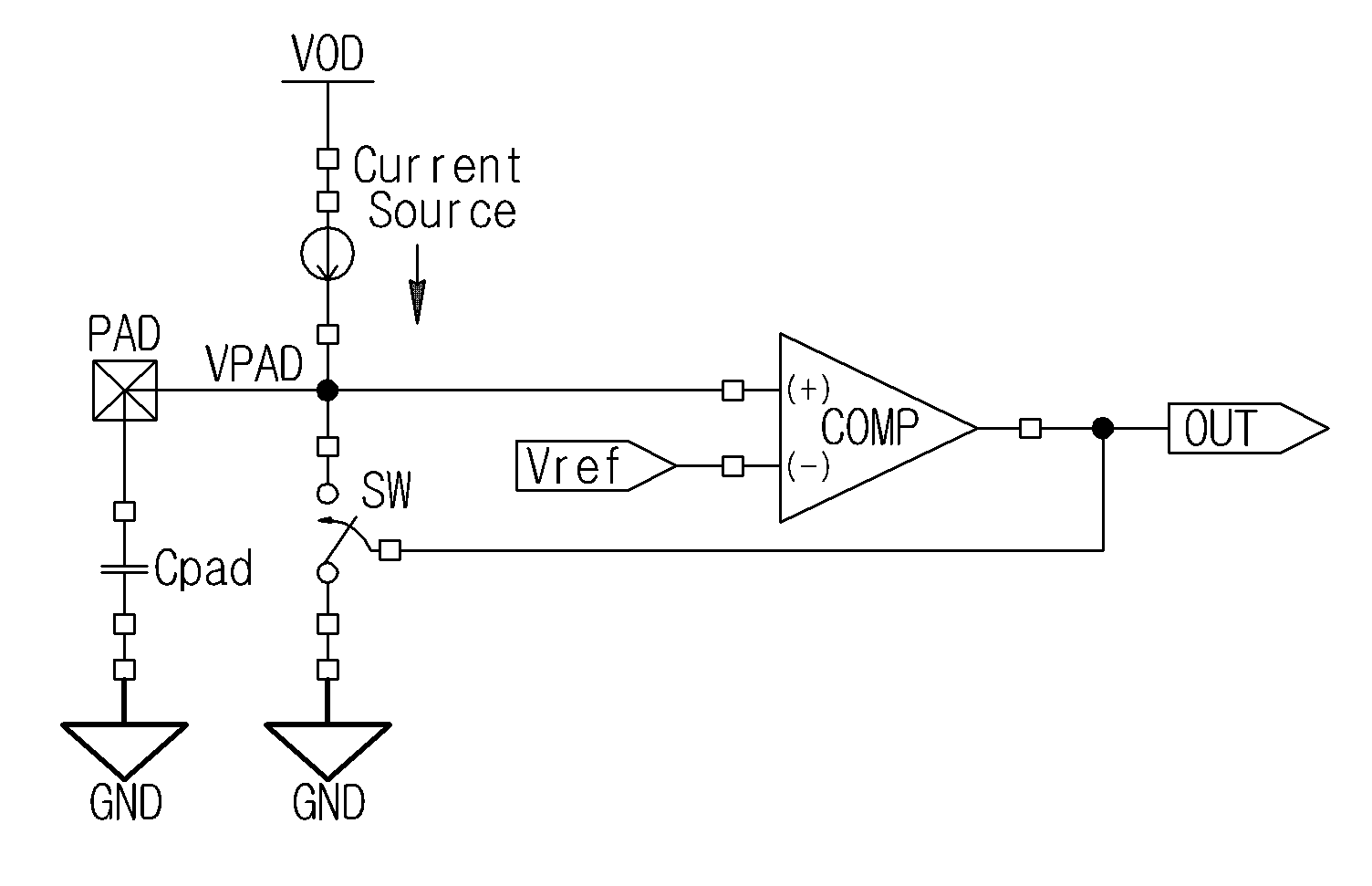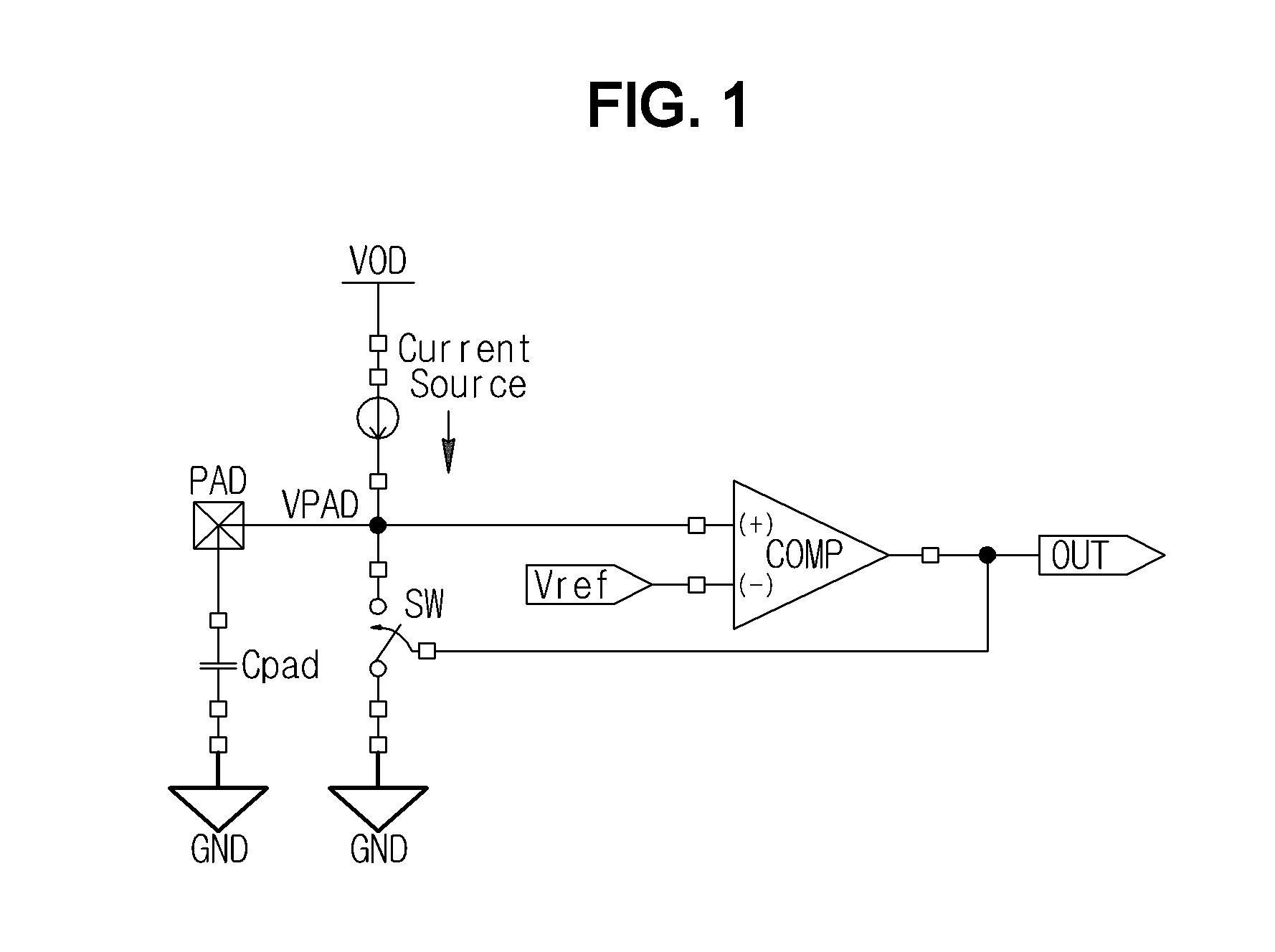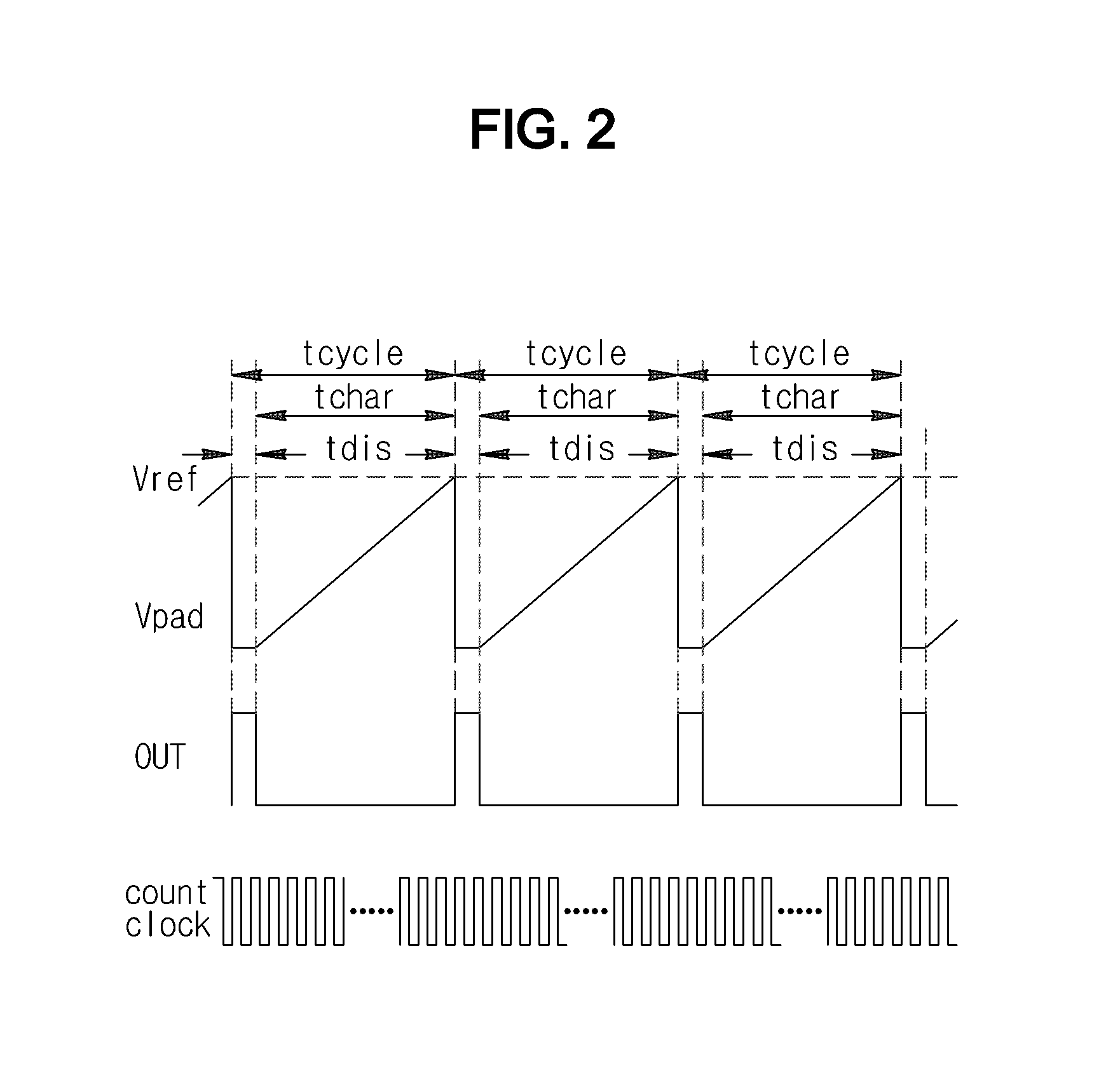Capacitance measuring circuit for touch sensor
- Summary
- Abstract
- Description
- Claims
- Application Information
AI Technical Summary
Benefits of technology
Problems solved by technology
Method used
Image
Examples
Embodiment Construction
[0040]An embodiment of a capacitance measuring circuit for a touch sensor according to the present invention will now be described in detail with reference to the accompanying drawings.
[0041]FIG. 5 is a schematic diagram showing a capacitance measuring circuit for a touch sensor according to the present invention.
[0042]A capacitance measuring circuit for a touch sensor according to the present invention includes a reference voltage generation unit 10 for generating a first reference voltage and a second reference voltage, a MUX unit 60 for selecting one form among electrodes (PAD) 70 when the number of electrodes touched by a user is plural, a comparator 20 for comparing a voltage generated by the reference voltage generation unit 10 with a voltage input from the electrode, a charging / discharging circuit unit 50 for charging the electrode from the first reference voltage to the second reference voltage or discharging the electrode from the second reference voltage to the first refer...
PUM
 Login to View More
Login to View More Abstract
Description
Claims
Application Information
 Login to View More
Login to View More - R&D
- Intellectual Property
- Life Sciences
- Materials
- Tech Scout
- Unparalleled Data Quality
- Higher Quality Content
- 60% Fewer Hallucinations
Browse by: Latest US Patents, China's latest patents, Technical Efficacy Thesaurus, Application Domain, Technology Topic, Popular Technical Reports.
© 2025 PatSnap. All rights reserved.Legal|Privacy policy|Modern Slavery Act Transparency Statement|Sitemap|About US| Contact US: help@patsnap.com



